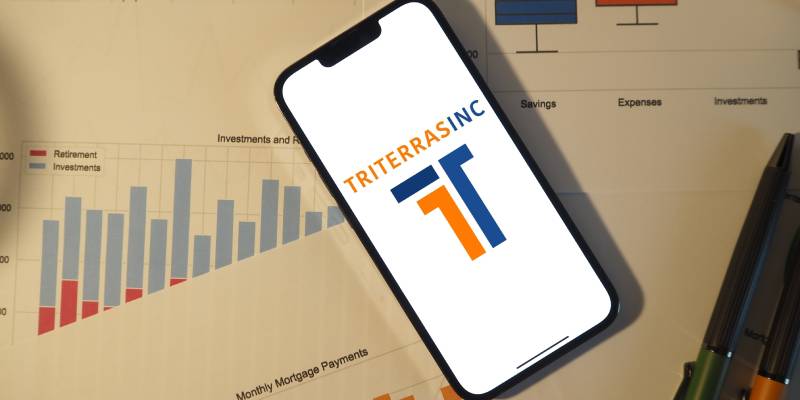Think about joining forces with the very best in tech and banking. That is what happened when Apple teamed up with Goldman Sachs. They made the Apple Card to change finances for the better. Both giants expanded their reach – Apple into money matters and Goldman Sachs into everyday banking. We are going to look closely at how this bold move worked out. What went right, what went wrong, and what does it all mean? Ready to dive in?
Exploring the Origins of the Apple Goldman Sachs Partnership
One day in March 2019 was a game changer. Apple and Goldman Sachs, two leaders in their fields, launched something new: the Apple Card. They shared the news at an event full of buzz, showing Apple moving beyond gadgets into money services. The Apple Card was their star, meant to work perfectly with your iPhone. Goldman Sachs, usually all about big business, was stepping into your daily banking life.
Tim Cook, Apple’s boss, was thrilled, calling it the best card launch in America ever. That early win seemed to prove the big dreams behind the team up. But as we will see, the road was rocky, too.
Strategic Goals and Early Wins in the Tech Finance Alliance
You are probably wondering what Apple and Goldman Sachs wanted from this deal. Apple wanted to make more money from services, not just sell devices. Goldman Sachs wanted in on personal banking, and the Apple Card was key. They started with incredible offers like zero-interest deals on Apple stuff – a fresh take on credit cards. But there were tough times ahead, too. Remember, success is not just about victories. It is about facing up to the tough stuff.
Apple Expansion into Financial Services and User Integration
Have you tried Apple’s new money services? They have a high-interest savings account and a way to pay later for your purchases. All meant to work smoothly with your iPhone. The Apple Card gives you cash back and has no fees. You have got to thank Goldman Sachs for their part in all this. They brought new finance tools right to your wallet. As this partnership grows, so does the way we bank – It is all becoming part of our daily tech lives.
Goldman Sachs Strategy in Consumer Banking and Apple Card
Goldman Sachs chose to dive into personal banking with the Apple Card. They were in it for the long haul, planning to stick around until 2029. But it wasn’t easy. High costs and lots of rules made them think twice about their plans. They had to be tough to handle the mix of tech and finance.
Also Read: Apple and Goldman Sachs Partnership Reshape Banking. How?
Navigating Operational Hurdles in the Apple Goldman Sachs Partnership
When looking at the Apple and Goldman Sachs deals, knowing the rough spots they have is critical. These weren’t minor issues. They shook up how things ran and hit Goldman Sachs’s wallet hard.
First off, there was a clash over when to send out bills. Apple wanted it done by the calendar, not how banks usually do it. Then, there was the instant cashback – a great perk that meant Goldman Sachs had to work fast to get it right.
Apple’s no-fee approach was great for you but inflexible on their profits. And Goldman Sachs was generous with credit, which led to more losses than banks like JPMorgan or Bank of America usually see.
All this shows just how complex this partnership was. It reminds us that intelligent credit handling is vital in keeping such ventures afloat.
Underwriting Standards and Credit Losses: A Financial Analysis
Goldman Sachs was bold in handing out the Apple Card, but it meant they lost more money when people couldn’t pay back. Their loss rate was twice as high as other big banks. By late 2023, they were losing even more. They gave a lot of cards to people with not-so-great credit scores, which increased the chance of not getting paid back. They lost about $500 million over a year because of this. It is clear that chasing growth has significant risks and affects how people see the partnership.
Public Perception and Controversies in the Partnership
When thinking about the Apple-Goldman Sachs Partnership, the issue of whether it treated men and women somewhat comes to mind. They had to face the government over it. Goldman Sachs said they were all about fairness, but Apple stayed quiet, raising questions about their teamwork.
The drama did not end there.
- Accusations of gender bias led to investigations.
- Goldman Sachs promised fairness, but Apple did not say much.
- Tricky billing and instant rewards also put them in the spotlight.
How people saw them and what they will do next are both pretty important.
Assessing the Proposal to Dissolve the Apple Goldman Sachs Partnership
Apple might want to break up their finance deal with Goldman Sachs in the next year or so. It is not just about the Apple Card. It is about their whole money deal, including a high-interest savings account. Apple might need to find a new buddy as they build their service game and keep money tied in with their tech. Watching this play out, we can’t help but think about the future of tech and bank deals.
This breakup could mean significant changes for both sides.
- Apple needs a new partner to keep its services slick.
- They are ending the money services deal, not just the Apple Card.
- What happens next could shake up tech bank teamwork.
This split will change how tech and finance companies work together and what they offer us.
Future Trends in Tech Finance Alliances Post Partnership
With Apple and Goldman Sachs going their separate ways, you might wonder what’s next for tech bank deals. They have learned a lot. Goldman Sachs showed the risks of being too eager to lend. The industry might get more careful, aiming for steady profits rather than quick growth.
This end also signals a shift in how we bank. Future deals could be more cautious, with companies trying to avoid the bumps Goldman Sachs hit. This might affect you since people have started liking having finance mixed with their tech. As the market adapts, we might see new faces offering clever new services that fit your desires.
Apples Future in Consumer Finance After the Partnership
As you think about what’s next for Apple in money services without Goldman Sachs, imagine them making their tech even better at handling your cash. What happened with Goldman Sachs could guide new tech bank partnerships, setting the stage for what comes next. It is not just Apple that can learn from this. It is a big deal for everyone in the game.
Key Takeaways for Goldman Sachs and the Finance Industry
Goldman Sachs learned about balancing partnerships and the dangers of lending too freely from the Apple deal. These lessons could change how the money world tackles deals and handles risks, leading to safer bets in the future. What they have learned will shape the stuff you will see out there.
The Partnerships End Consumer Impact and Market Dynamics
As Apple and Goldman Sachs part ways, you might wonder what it means for you. Apple getting a new finance friend could change the perks or rules for things like the Apple Card. The business world is watching this breakup, showing how tricky it can be for Tech-Finance Alliances to work well together. For you, this could mean more choices as companies work hard to win you over. As the market looks back on this ending, It is ready for fresh strategies that could change how we deal with money.
The Genesis of the Apple Goldman Sachs Partnership
In February 2019, the Wall Street Journal let us in on a big secret: Apple and Goldman Sachs were teaming up. Apple wanted to make more than just gadgets, and Goldman Sachs was ready to dive into everyday finance.
The Apple Card was their big idea, shown off at an Apple event. Tim Cook later said the launch was a massive hit in the US.
Think about why they joined forces. Apple wanted more from its services, and Goldman Sachs saw a chance in personal banking. The Apple Card was their first big step together. It was a great start but also set them up for some tough challenges in mixing tech with finance.
Strategic Aspirations and Initial Success of the Partnership
In the world of tech finance, the Apple and Goldman Sachs partnerships, big dreams and first wins are essential. Apple wanted to grow its services, looking at the Apple Card to help. Goldman Sachs saw a door into personal finance. The Apple Card was their way to step through it.
The start was all about grabbing customers’ attention. Yet, despite the first success, there were hurdles. It is a reminder that even great partnerships can hit snags that test how well they can change and keep going.
Operational and Design Challenges in Tech Finance Alliances
When tech meets finance, It is a big deal. But there can be tough spots, like in the Apple Goldman Sachs deal. These weren’t minor problems. They shook things up for both companies.
They argued over billing dates. Apple wanted them set by the calendar, which made Goldman Sachs work extra hard. The instant cash-back rewards were another big task – they had to get those quickly. Apple’s choice to skip fees was good for us but hard on Goldman Sachs’s money-making.
When you think about these choices, you see they had a significant impact. They showed how tough it can be to bring new ideas to life and make them pay off.

Pricing Strategy and Profitability in the Partnership
The pricing plan and profits matter a lot in the Apple-Goldman Sachs partnership. The Apple Card stood out with its no-fee promise. It matched Apple’s friendly brand but pressured Goldman Sachs’s profits.
Top banks usually make money from fees. Without them, Goldman Sachs had to make money in other ways, like interest or store payment fees. But with high losses from the Apple Card, profits were hard to come by. They lost around $500 million in a year. It shows the stress of not charging fees, especially compared to other banks.
While thinking about money matters, looking at how they managed credit risks is crucial, as well as shaping how well the partnership did.
Credit Risk and Underwriting Standards Scrutiny
Goldman Sachs took a bold approach to the Apple Card, leading to higher losses when people did not pay. They gave people with lower credit scores many cards, upping their risk. This brings up questions about how they decide who gets a card and the effect on their money.
While these details are crucial, they are just one part of the bigger story of the Apple-Goldman Sachs partnership.
Public Scrutiny and Controversies of the Partnership
As you dig into the Apple Goldman Sachs partnership, do not forget the tough questions they faced, like with the Apple Card’s fairness to all customers. These questions made the government look closer, with Goldman Sachs, the card issuer, at the centre. Apple did not say much, which made people talk.
They also had to figure out billing cycles and instant rewards. These challenges showed their bold and different approach and the tricky parts of their plan.
These rough patches and challenges show how the world of tech finance is constantly changing and growing.
COVID-19 Impact on the Apple Goldman Sachs Partnership
When the pandemic hit, Apple and Goldman Sachs spread their 0% finance offer to more Apple products, helping customers when times were tough. They let Apple Card users delay payments without extra interest, giving them a break during the economic struggle. These moves showed how they supported their customers, proving that being flexible and creative is essential when the world is in crisis.
Expansion Strains in Tech Finance Alliances
Watching Tech-Finance Alliances, It is worth looking at the Apple-Goldman Sachs partnership and what’s happening now. The Apple Card is a hit, with millions of users. But Goldman Sachs, the bank behind it, is struggling. Issues like regulatory checks on the card business have raised doubts about how solid the partnership is.
As you think about these growth pains, consider the bigger picture and what it means for the future of these kinds of deals.
Read More: Apple and Goldman Sachs Partnership Reshape Banking. How?
Proposal to Dissolve the Apple Goldman Sachs Partnership
The latest news is that Apple might want to end its credit card and savings deal with Goldman Sachs. They are talking about calling it quits on the whole money services deal in the next year or so. This could mean significant strategy changes for both, with Apple possibly looking for a new ally to keep their services seamless. As the tech and finance worlds evolve, this breakup could signify new team-ups and services coming our way.
Future Speculations and Outcomes of Tech Finance Alliances
There is much to consider when you think about what the Apple Goldman Sachs break could mean. What’s next for these kinds of tech bank deals? They have learned plenty. Goldman Sachs’s eagerness to lend showed the risks. Now, everyone might be more cautious, looking for steady wins rather than fast growth.
This ending also marks a new chapter in banking for us. Future deals might be more careful, trying to avoid the problems Goldman Sachs faced. This could affect you, with companies offering more finance services that blend with your tech life. As the market changes, we might see new companies stepping up, ready to meet your needs with fresh ideas.
The Way Forward After the Apple Goldman Sachs Partnership
As we say goodbye to the Apple Goldman Sachs partnership, you might wonder what’s next for finance and tech. This team-up was a trailblazer, showing how to blend banking and technology. Despite the tough spots and money pressures, it led the way in new banking ideas. Looking ahead, everyone involved needs to weigh their dreams against the risks to keep growing smartly. Thinking about these points helps us understand what’s changing in the market. Talk to our pros to see how we can help you out.
Global trade leaders have a large database of information about big and small FinTech companies and trade finance firms. Visit https://www.globaltradeleaders.com/ for more stories of Fintech leaders.



